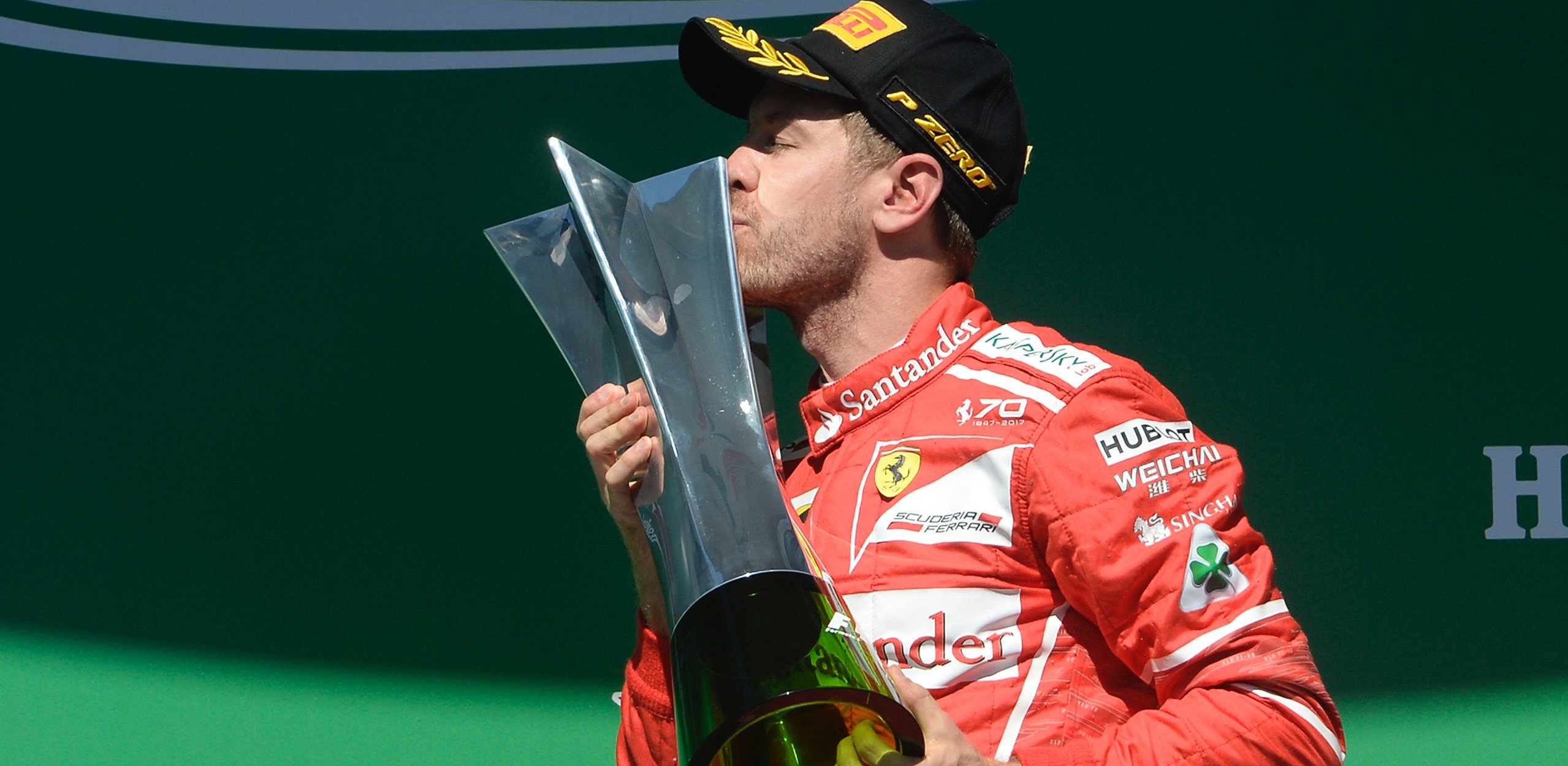
Church bells are ringing in Fiorano again as Sebastian Vettel’s Ferrari dominates the Brazilian Grand Prix, giving the Scuderia its first win in Brazil since 2008.
Ferrari’s Sebastian Vettel took victory in the Formula 1 Grande Premio Heineken do Brasil 2017 at Interlagos, lifting a weight from his shoulders as he returned to his winning ways. He took control at the first turn and held off Mercedes’ Valtteri Bottas for 71 laps for his fifth win of the season, the 47th of his career, and first since July at the Hungaroring.
His expected duel with newly-crowned World Champion Lewis Hamilton was thwarted when the Brit crashed in qualifying and started the race from the pit-lane. Despite the setback, Hamilton produced a scintillating recovery to finish fourth, just missing the podium by less than a second.
Bottas took second place, unable to catch Vettel and barely able to hold off Vettel’s Ferrari teammate Kimi Raikkonen who finished in third place. Max Verstappen lead teammate Daniel Riccardo across the line for fifth and sixth places respectively, followed by Brazilian Felipe Massa driving in his final Grand Prix at his home circuit, and holding off former Ferrari teammate Fernando Alonso to finish seventh after a race-long duel. Sergio Perez took ninth place for Force India while Nico Hulkenberg grabbed the final point for Renault.
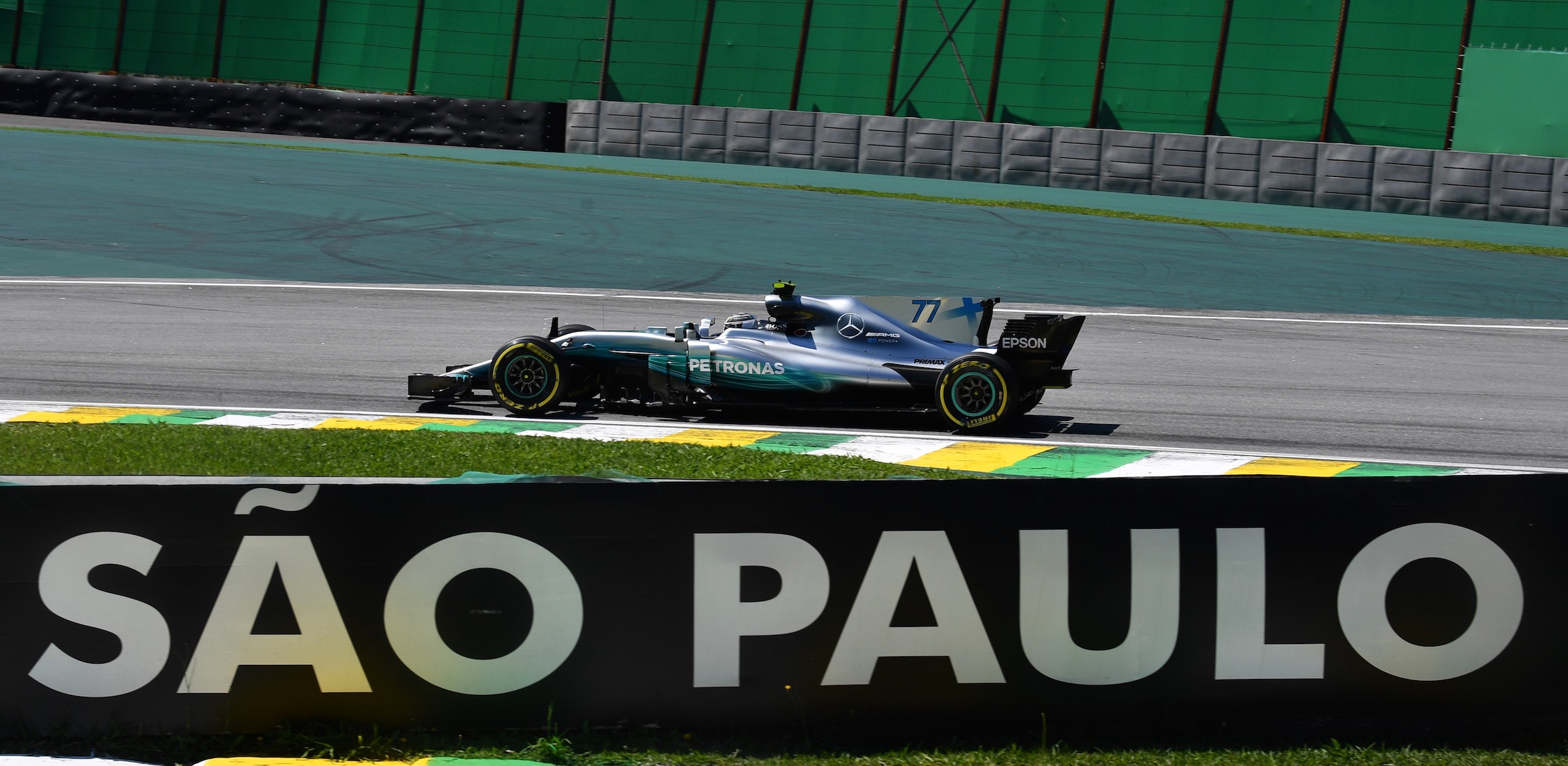
Rising from a failed housing development in 1938, Interlagos as it is locally known, soon became encircled by the rapidly growing Sao Paulo metropolis and began vying for international status in the early 70s with the success of Brazilian Emerson Fittipaldi. After holding back-to-back non-championship rounds in 1971-72, Interlagos hosted its first championship Grand Prix in 1973, which was duly won by Fittipaldi. He returned in 1974 to make it back-to-back wins, while fellow countryman Carlos Pace won his only F1 race there in 1975. Pace died in an airplane crash in 1977, with Interlagos officially renamed Autodromo Jose Carlos Pace in his memory. In 1978, Rio bid and won the rights for Brazil’s F1 event; the next few years saw the championship event bounce between the two venues, but the rise of Ayrton Senna brought the track back into favour. Formula 1 has made the shortened 4.309-km (2.67-mile) Interlagos the home of the Brazilian Grand Prix since 1990.
The circuit has 15 turns, with no two turns alike, tremendous speed on the sinuous front straight and lots of undulating elevation change. While most passing occurs at the end of the front straight, the key is to set up the car for Turns 1 and 2, known as the “Senna do S” curves so the pass sticks. The attempted pass will only succeed if the passing car can maintain control in these steep fall-away double-esses.
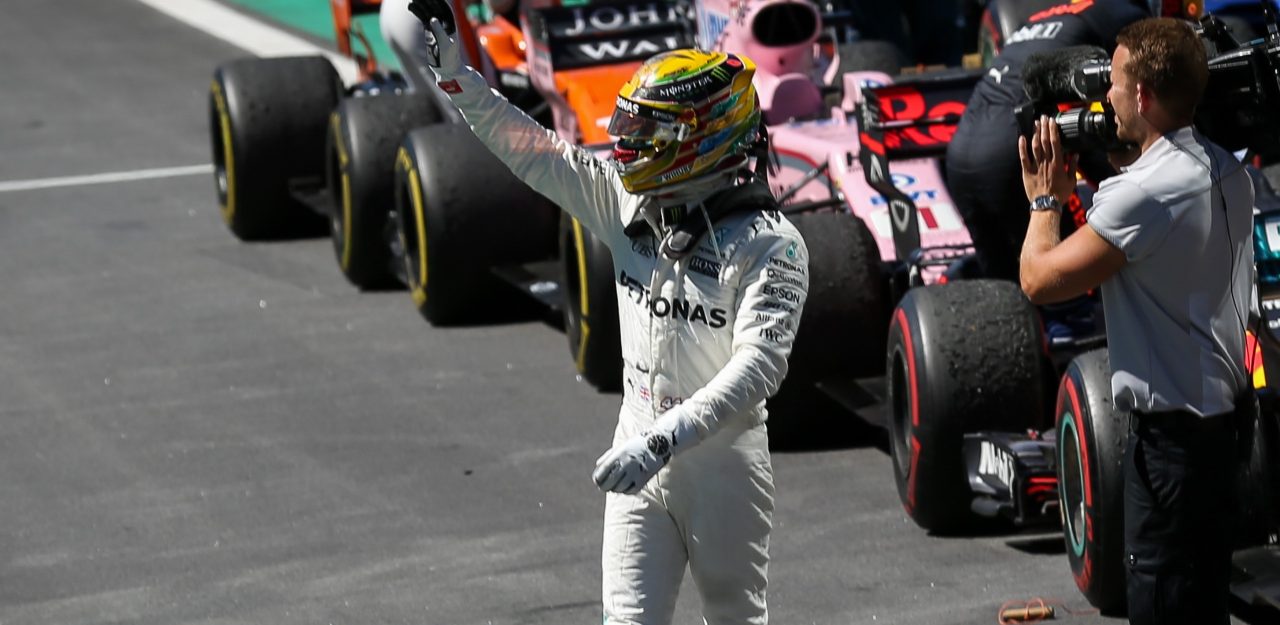
This set of curves is challenging, with springs and dampers more important here than aerodynamics, as the car decreases speed entering the first corner and then increases speed out of both curves. You start at the front, fine-tuning the springs, anti-roll bar adjustments and dampers in tandem to give you sharp turn-in characteristics. The front spring settings will be as stiff as possible without upsetting the overall balance of the car. You then try to balance out any induced understeer by increasing front wing angle or choosing a smaller front anti-roll bar until you find a more neutral balance. Should Sunday’s race temperatures be warmer than qualifying, the teams must be careful of the front tyres going above optimum tyre temperatures due to overloading the fronts with weight. Aggressive drivers such as Hamilton, Vettel, Verstappen and Alonso will use the kerbs so their damper rebound and jounce settings must allow for quick resets to keep from skating.
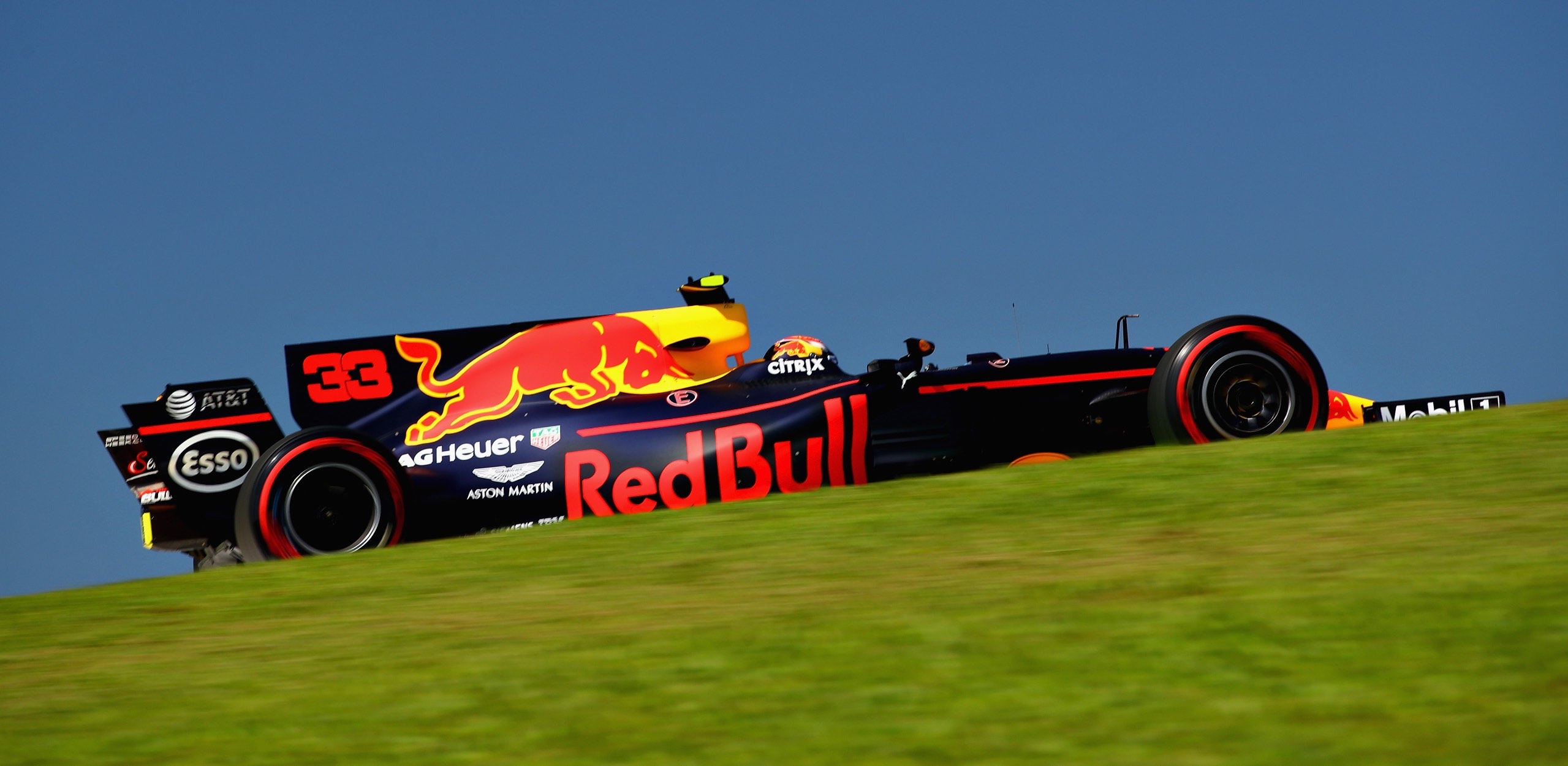
Lewis Hamilton seemed to do himself no favours when he stuffed his Mercedes into the tyre barriers in the first two minutes of Q1. The Mercedes tail broke loose, and the car sustained left side damage, eliminating him from going farther. Mercedes used the situation to install a new PU and other sundry items, all with the purpose of starting Hamilton from the pit lane to go to the front as fast as he could.
There was spotty drizzle in Q2, but by Q3, it was dry enough to see the qualifying record fall. Vettel looked to have the pole, with Bottas 0.082-seconds behind, but the Ferrari ace was slower in his second run, opening the door for Bottas, who promptly closed it with a lap .038 quicker, leaving Vettel to start second, followed by Raikkonen and Verstappen on the second row. Fernando Alonso found a perfect lap in his pocket for McLaren and would be starting sixth. It was Bottas’ third F1 pole of the 2017 season, while pole position number 170 for Mercedes.

With the ambient temperatures markedly higher on race morning, the profile changed to a possible struggle for tyre conservation, though Sebastian Vettel’s start would have you thinking otherwise.
The German leapt out of the blocks to flash past Bottas going down the inside into Turn 1, exiting the Senna S with the lead solidly in hand although he was unable to gain more than that the initial 2-second gap on the Finn. Farther back Stoffel Vandoorne found himself sandwiched between Daniel Ricciardo’s Red Bull and Kevin Magnussen’s Haas; Ricciardo would spin, stop for tyres and return, while Vandoorne’s and Magnussen’s races instantly vapourised.
Behind, Esteban Ocon was tapped by an understeering Roman Grosjean at Ferradura Corner, with Ocon hitting the barriers to end his 27-race finishing string, and Grosjean was given an undeserved 10-second penalty and points against his license. The collisions brought the Safety Car, and it seemed half the field drove through the pit.
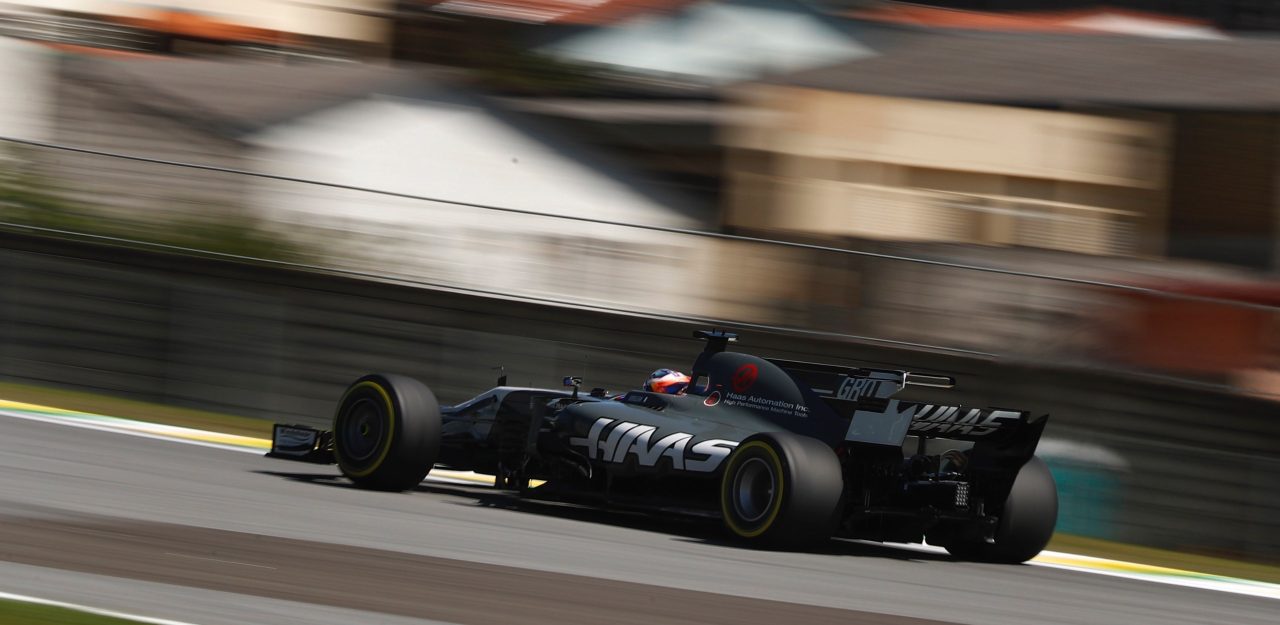
With the debris cleared on Lap 4, Vettel once again took the lead, but Mercedes isn’t finished trying to help Bottas jump Vettel, and began working on a strategy that would undercut the German. Behind, Hamilton was on the charge, rising to 14th thanks to the early SC and then into 12th by Lap 7, 8th by Lap 15 and 5th by Lap 20. Having Hamilton now flying, Mercedes brought Bottas in early on Lap 27 from just 1.6-seconds behind Vettel. As the Finn hit the pit lane, the German responded with renewed speed to enlarge the gap. Ferrari called Vettel in on the next lap, and thanks to his initial fast lap while Bottas was stationary in the pits, Vettel returned just in front of the Finn. Though Bottas tried to reel in Vettel on cold tyres, the four-time World Champion found his balance quickly and opened up a gap of 2-seconds, which remained insurmountable for the Mercedes driver all the way to the checkered flag.
Meanwhile, thanks to the leader’s pit stops, Hamilton inherited the race lead. He made his required pit stop on Lap 43, taking on supersofts and returning in fifth place as Vettel returned to the front with 2.6-seconds back to Bottas. Hamilton made fast work of Verstappen, catching the Dutchman at a prodigious pace and blowing past him on Lap 60; with Hamilton clocking at 347-km/h on the straight with a tow and DRS deployed, all of a sudden everyone seemed vulnerable. However, Hamilton’s tyres had other ideas. As he closed up on Raikkonen in third place, he felt his tyres go off. While still quick, the edge he needed to close out the Finn was gone. The proof was his front left tyre locking up as the went for the pass on Raikkonen at the start of Lap 67. The Finn shrugged off the Brit’s advance, held his line and secured his podium for Ferrari.
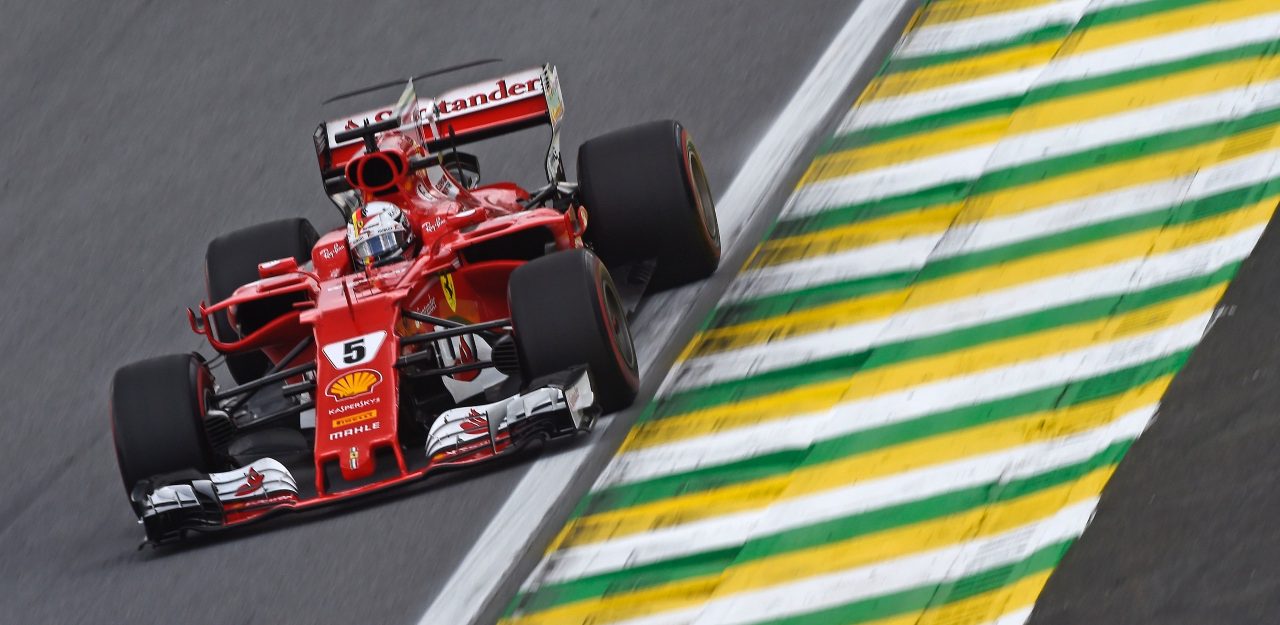
At the same time, Verstappen pitted for fresh tyres. With plenty of distance back to his charging teammate Ricciardo, the young Dutchman knew his fresh tyres / low fuel Red Bull would enable him to grab a dangling jewel for his team, his Renault engine and himself. His first quick lap on fresh tyres clocked at 1:11.04-seconds, beating Juan Pablo Montoya’s 13-year-old Interlagos race lap record by .04-seconds.
Vettel, Bottas and Raikkonen were joined on the podium by Felipe Massa, who saluted the Brazilian fans for their loyalty and support during his 15-year career. He had offered the same praise last year upon retiring, but had been recalled by Williams after Bottas, now standing on the second podium step in Brazil had been snatched by Mercedes to fill Nico Rosberg’s vacant seat.
This year, Massa, 36, decided he would be stepping away for good. Among the touching moments was Massa’s eight-year-old son Felipinho calling his father over he team radio and telling his father, “Daddy, I’m so proud of you. I will support you wherever you go. By the way, I loved your start!”
Not a dry eye in the house.
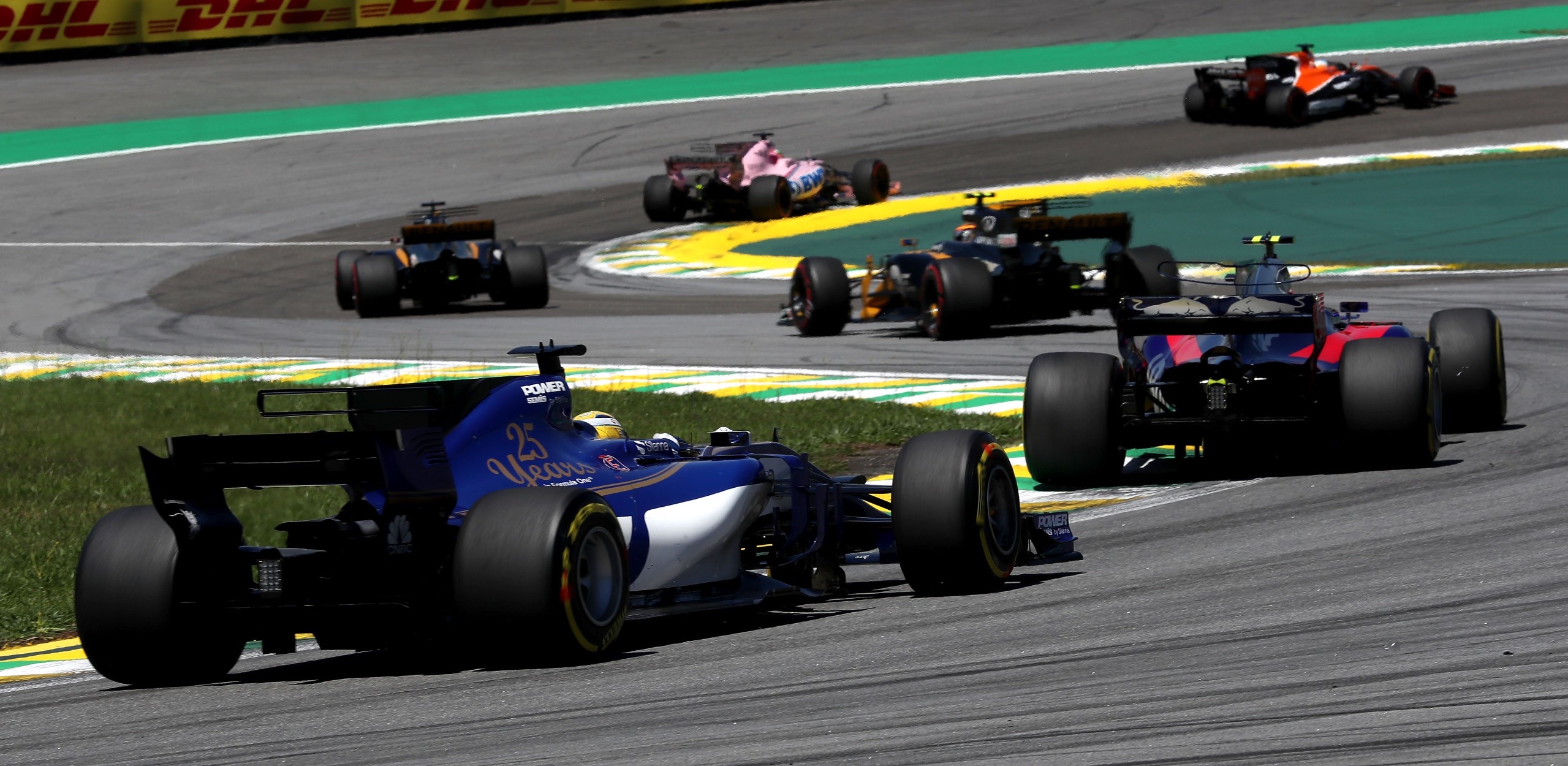
While William’s confirms they have not signed anyone to take over Felipe Massa’s vacant seat, they will be installing Robert Kubica in their 2017 Williams for testing immediately after the season-ending F1 Grand Prix of Abu Dhabi. Kubica is the first Polish driver to compete in Formula 1, taking his maiden F1 victory in 2008 at the Canadian Grand Prix, before being severely injured in a Rally event. After nearly losing his right arm, he has progressed to the point of final consideration for the 2018 season. Should it come to pass, it would be one of the unique stories to follow next season. Powodzenia, Robert!
Sebastian Vettel and Valtteri Bottas will battle in Abu Dhabi to decide second place in the Drivers Championship. With the Brazilian results in, Vettel leads Bottas by 22 points. Bottas has had, by many accounts, a disappointing second half of the 2017 season and will need all his talent and some luck to overcome the points deficit in the desert.
Lewis Hamilton, free of championship winning pressures and fitted with Mercedes’ new Series V engine demonstrated how much extra margin and power the 2017 engines have with a turn of their small adjustable steering wheel switch. Able to overtake practically at will, it’s a given Hamilton will be tough to challenge at the Marina in Abu Dhabi. What needs addressing is the Ferrari and Renault answer for 2018. At times, Hamilton was as much as 25km/h faster than the car he was overtaking, with DRS and a tow. Next year, there is a three-engine limit for the season. I am certain it’s already crunch time in the Maranello and Enstone engine departments, but today must have had them considering cancelling holidays and weekends until April of next year. You have a formidable task, gentlemen, but that challenge has always been at the heart of F1 since the beginning. Go get ’em.
Now it’s on to the season-ending Abu Dhabi Grand Prix on November 24.
